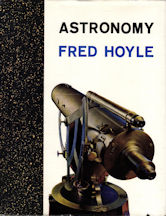In this book he combines the roles of scholar and expositor. Mastery of fact and marshalling of argument mark the scholar, while clarity of language and the telling use of simple diagrams mark the master of exposition.
Beginning at the dawn of history, when men thought of the stars as glimpses of a distant fire seen through holes in a canopy spread above a flat Earth, the author takes us step by step to the modern concept of an unimaginably vast but still expanding universe. At each stage we see clearly just how advances in knowledge were brought about: how astronomical instruments developed, how the measurement of positions on the celestial sphere became more precise, how the formulation of physical laws progressed, what firm conclusions could be drawn and what speculations could reasonably be made from the available evidence.
At no stage are we asked to take things on trust. Where the distance, the mass, or the physical make-up of a heavenly body has been firmly established, we are told how it was done. Where calculations are not yet precise, we are given the possible margin of error and warned how it might affect the reliability of arguments based on those calculations. When we reach the last chapter we are thus in a position to weigh the evidence for ourselves in one of the greatest debates of our age. Did the universe have a definite beginning and will it have a definite end, or is it from everlasting to everlasting?
More than 400 photographs, paintings, documents, diagrams and star maps, including some previously unpublished, make this book unique among works on astronomy. The illustrations – many in full colour, and all closely integrated with the text – give the subject an unusually rich pictorial dimension. Diagrams help to clarify difficult concepts and to bring scientific arguments into sharp visual perspective.




